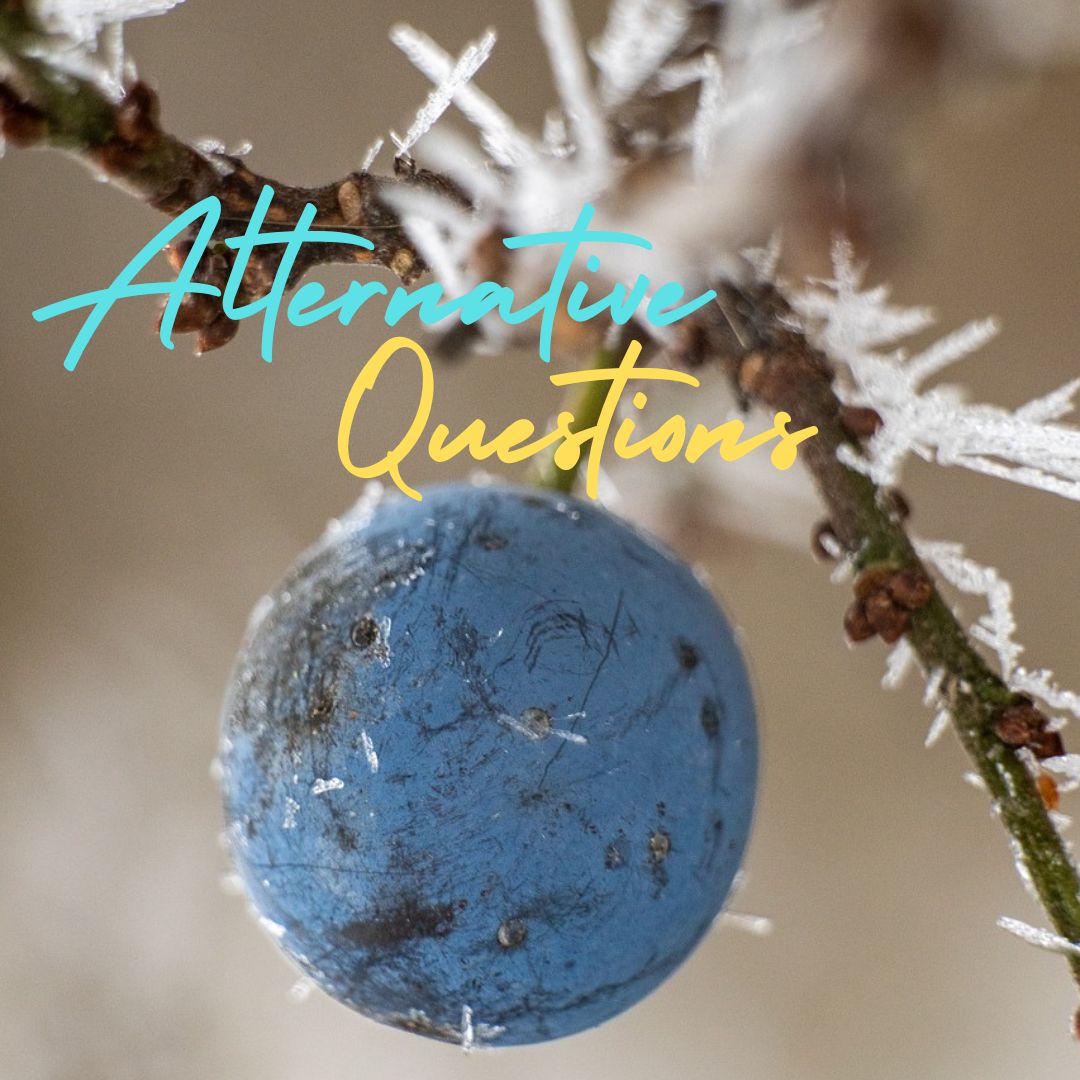Alternative Questions (Interrogative sentence)

Alternative Questions:
An alternative interrogative question, also known as a choice question, presents two or more options to the respondent, who is then prompted to select one.
These questions are useful when seeking preferences, opinions, or decisions.
Alternative interrogative questions, along with examples:
Structure:
Begin with a statement presenting the alternatives.
Follow the statement with a conjunction or to indicate a choice.
End the question with a question mark (?) to denote its interrogative nature.
Examples:
Do you prefer tea or coffee?
This question presents two options (tea and coffee) and asks the respondent to choose between them.
Would you like to go to the beach or the mountains for vacation?
This question provides two alternatives (beach or mountains) for the respondent to express their preference regarding vacation destinations.
Is your favourite colour blue or green?
This question offers two choices (blue or green) for the respondent to indicate their favourite colour.
Should we have pizza or pasta for dinner?
Here, the question presents two meal options (pizza or pasta) and invites the respondent to make a decision.
Alternative questions and help words:
Alternative questions typically begin with auxiliary verbs or modal verbs that introduce the choices or alternatives.
These verbs help frame the question by indicating that a decision or preference is being sought.
Here are some examples of auxiliary verbs or modal verbs commonly used in alternative questions:
Do you want…?
Do you want tea or coffee?
Would you like…?
Would you like to watch a movie or go for a walk?
Should we…?
Should we have pizza or pasta for dinner?
Can you…?
Can you meet on Monday or Tuesday?
Is it…?
Is your favourite colour blue or green?
How to respond to alternative questions:
The answers to alternative questions typically involve selecting one of the presented options or alternatives.
Respondents are expected to choose between the given possibilities.
The format of the answers can vary, but they generally align with the structure of the question.
Here are some common ways individuals might respond to alternative questions:
Affirmative Response:
Yes, I want tea.
Would you prefer tea or coffee?
Sure, let’s have pizza.
Should we have pizza or pasta for dinner?
Negative Response:
No, I don’t drink coffee.
Do you prefer tea or coffee?
I’d prefer pasta, not pizza.
Would you rather have pasta or pizza?
Specific Option Chosen:
I’d like to watch a movie.
Which would you like to do: watch a movie or go for a walk?
My favourite colour is blue.
Is your favourite colour blue or green?
Examples of short and direct responses to alternative questions:
Do you want tea or coffee?
Tea.
Should we have pizza or pasta for dinner?
Pizza.
Can you meet on Monday or Tuesday?
Monday.
Is your favourite colour blue or green?
Green.
Alternative Questions (Interrogative sentence)
Yes/No Questions (Interrogative Sentence)
Wh-questions (Interrogative Sentence)
Types of Interrogative Sentences
Negative Declarative Sentences: Structure, Usage, and Style
The Preposition place in sentences